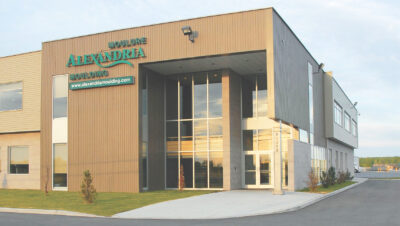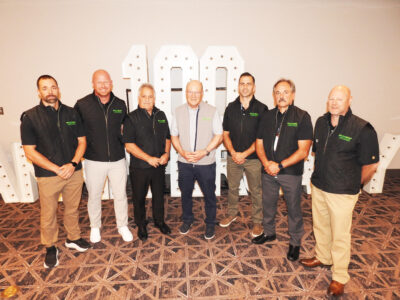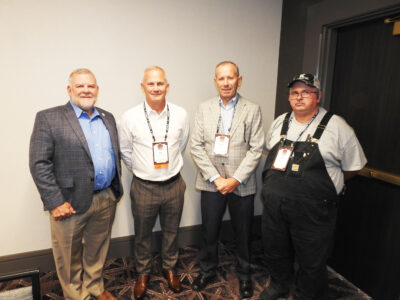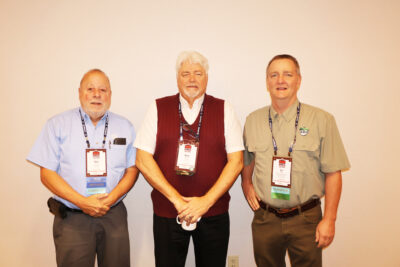Why Knot Know Your Lumber Recovery?
I climbed Mt. Rainier last year.
In preparation, I went through my gear and removed unnecessary weight. My climbing friend, Brian, always says, “Ounces is Pounds and Pounds is Pain.” So, I cut off tags, stripped labels, removed noncritical content, shortened handles, bought ultra-light gear—anything to shed ounces. Then it hit me: I could keep all this stuff and just lose some weight. Better yet, why not both? I stopped snacking, started exercising more, and dropped 10 pounds in two months.
Side note: I haven’t been below 200 pounds since I took this job and moved to the South, where I discovered fried pickles. The moral of the story is that there are big and small things we can do to improve our operations.
Did you know there are no publicly traded hardwood sawmills in the U.S.? There are a few in Canada. Why does the lack of publicly traded sawmills in the U.S. matter? The stock market exists to give companies access to capital. The independent nature of the hardwood industry makes capital investments harder. Without access to capital for improvements and increased automation, the hardwood industry lags behind softwood and other competitors. More consolidation—and eventually some incorporations—are coming to hardwood, just as they have to the softwood, railway, and preserved wood industries. There are programs to secure loans and other financial assistance to expand operations and increase capacity or automation. If you need details, please reach out to me. Advanced automation is a big change—like losing weight—but it’s not the only change we need to make.
Capital is one problem, but as one business owner told me, “The issue is not sawmill capacity; it’s the ability to operate a sawmill profitably.” Rail ties, truck flooring, crane matting, board road, shipping pallets, and ammo boxes are all made from hardwood and depend on grade lumber for stability. Therefore, the cost of grade lumber is critical to the infrastructure of our continent. While we work to promote grade lumber, we also need to look in the mirror—and at the gear we’re using.
The moral of the story is that there are big and small things we can do to improve our operations
Dallin Brooks – NHLA
The key thing NHLA wants all U.S. sawmills to know: we have partnered with the United States Forest Service (USFS) to provide log and lumber yield studies to improve recovery and increase profitability. We have applied for similar grants in Canada through the Canadian Hardwood Bureau (CHB) and hope to receive them soon. The USFS is subsidizing NHLA staff to come to your facility and evaluate the optimization of your log grading and lumber recovery to ensure you’re maximizing every dollar. The grant requires matching funds, so there is still a slight cost to the mill—but it’s reduced by 75 percent.
Can you afford not to know whether your production team is operating at maximum lumber recovery? If they are, that’s good to know; if they’re not, that’s even more important. NHLA is working to grow and stabilize the hardwood industry, and we need mills to participate in our grant programs. With two Wood Innovation Grants funding this, we will spend over a million dollars helping hardwood mills. These are the small ounces that add up to the big pounds—and pain.

To date, we have completed studies at 37 different hardwood sawmills. The cost savings have been significant: total industry savings the National Inspectors have helped members realize is estimated at $6.7 million per year. In addition, mills have increased cash flow by improving production, yield, and operational efficiency. Common findings include: too-high log inventories in summer; insufficient production per man-hour to justify staffing; not achieving the percentage of Common & Better they should; and not reaching the Lumber Recovery Factor (LRF) they should.
Production and climbing are the same. Better gear makes a difference—but it’s expensive. The more you do, the more you have to cut waste. The small losses add up to big pain. Another Brian quote: “Proper Planning Prevents Poor Performance.” The funny thing is, Brian always brings his electric toothbrush—a trade-off he’s willing to make. I’m already hurting on these climbs—forget my breath and help me make it to the top. The hardwood sawmill is in the same boat during these hard times and needs to find ways to increase lumber recovery. In other words, the only thing you have to lose is your unknown losses.

So, contact Dana Spessert or the National Inspector today and ask about a yield study. Why Knot Know Your Lumber Recovery?
click here to visit the National Hardwood Lumber Association: nhla.com








